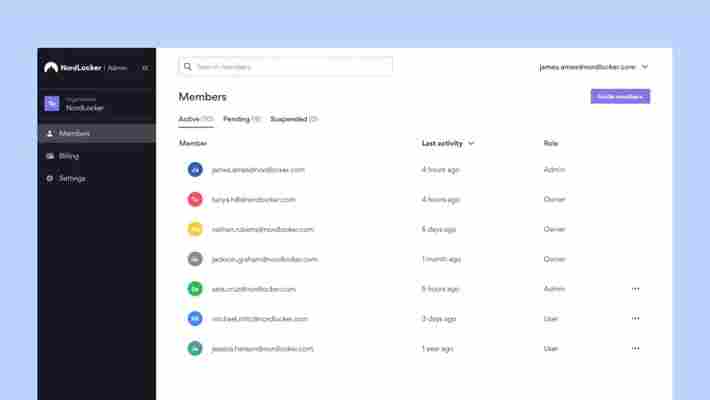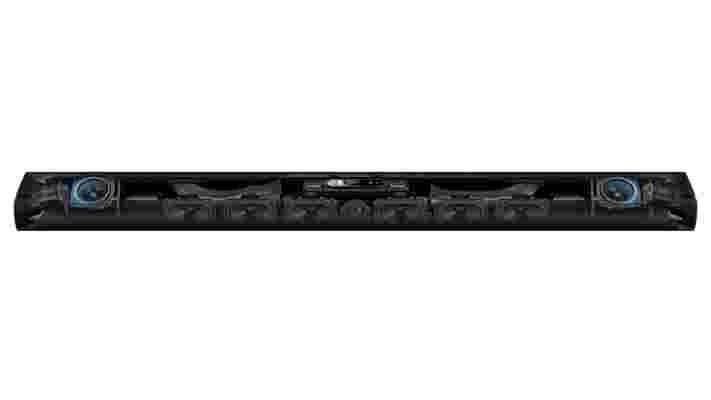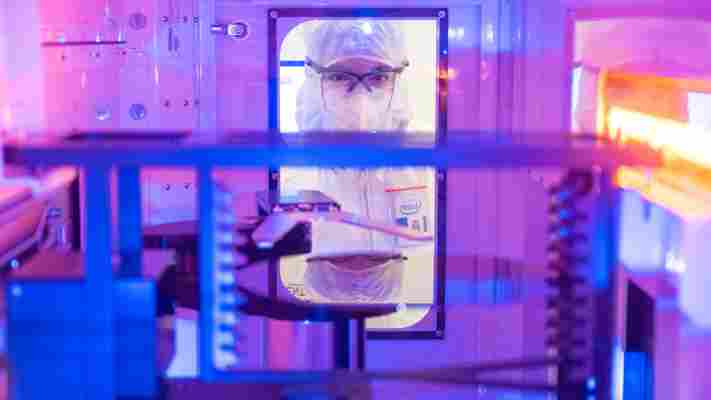NordSecurity’s encrypted cloud storage service NordLocker is expanding beyond consumers with the launch of its new business product aimed at protecting corporate data for organizations around the world.
NordLocker Cloud for business supports all file types and offers secure and convenient login methods including multi-factor authentication ( MFA ) as well as third-party logins from Google and Apple.
Just like its consumer offering, NordLocker’s new business product prevents important files from getting lost or exposed through the use of end-to-end encryption with encryption keys stored both on device and in the cloud. NordLocker Cloud for business also employs the world’s top cryptography algorithms and ciphers such as AES-256, ECC, and XChaCha20-Poly1305-IETF.
Head of product at NordLocker, Aivaras Vencevicicus explained in a press release how launching an encrypted cloud storage service for business was the next logical step forward for the company, saying:
“We introduced NordLocker as a robust file encryption tool in 2019. Since then, the product has undergone a few solid development phases and is now positioned as an end-to-end encrypted cloud storage option with a file encryption solution. It was only natural for us to move forward and launch an encrypted cloud service for business clients to offer a secure, convenient, and cost-effective way to store and manage their data.”

NordLocker Cloud for business
NordLocker Cloud for business is easy to set up and doesn’t require any additional infrastructure or advanced technical skills for organization’s deploying the company’s encrypted cloud storage solution.
The service’s Admin Panel provides a centralized solution that allows company admins to manage all users in a single place. At launch, admin functionalities include license distribution as well as role and access management though NordLocker plans to roll out account and file recovery, user groups, and user activity logs soon.
Each NordLocker business user gets a Locker Share functionality that makes it possible for coworkers to securely share entire lockers (encrypted folders) with both those inside their organization as well as with outside partners. Sharing files is also simple as users just need to type in the email address of the receiver.
Businesses can choose from two plans though there is also the option to get in touch directly with NordLocker to get a plan tailored to their organization. The less expensive plan costs $8.99 per user per month on an annual subscription and includes 500GB of encrypted cloud storage while the more expensive plan costs $14.99 per user per month and includes 2TB of encrypted cloud storage.
Harman Kardon's new Dolby Atmos soundbar bests Sonos Arc by avoiding its biggest flaws
Harman Kardon has announced the Citation MultiBeam 1100, a Dolby Atmos soundbar with a name like a weapon Judge Dredd would wield. It features 11 built-in speaker drivers for precise audio positioning, delivering 630W of audio, and its 45.2-inch/1,150mm width makes it ideal for the best 55-inch TVs and bigger.
With a price of £799 (around $990 / AU$1,400) for its May launch in the UK and Europe (it's expected to arrive in Australia later, but isn't currently planned for a US launch), it's taking aim directly at the Sonos Arc , which also uses 11 speakers to create Dolby Atmos audio, but costs a little more.
Except the Harman Kardon bests the Sonos in couple of key specs, which may make it a better buy for lots of people.
First up is HDMI passthrough: the Citation MultiBeam 1100 includes an HDMI input, as well as its HDMI eARC connection to your TV.
This means that you don't lose the use of a precious HDMI port on your TV, which is especially important on mid-range models that might have fewer ports. The soundbar can pass 4K HDR video through to your TV, including Dolby Vision HDR.
It also means that even if your TV doesn't support Dolby Atmos sound (such as the best Samsung TVs from before 2022, as well as lots of mid-range or cheaper models), you can easily get the full effect of Dolby Atmos audio from a streaming box or 4K Blu-ray player that's plugged directly into the soundbar.
The Sonos Arc doesn't include a second HDMI port, which means that for some people, it's just not a great buy, despite sounding fantastic. It's a continued frustration, but not a problem you'd have with the Harman.
Super streaming
Second is streaming audio support: the Citation supports AirPlay 2, just like the Sonos Arc, but also Chromecast, Alexa Multi-room, and Bluetooth 5.0 (though no aptX).
The Arc lacks the last three… though it does support Sonos' own multi-room streaming, of course.

MultiBeam me up
Harman says the sound equates to 5.1.2 channels, and the 11 speakers providing this consist of: six front-firing racetrack (ie, oval) drivers; two upfiring full-range drivers for Atmos height; and three tweeters, with one facing forward as the center channel, and two angled on the left and right for positional width.
Despite promising "deep, rich bass," we'd wager that it'll be a bit light on the low-end compared to a soundbar with a dedicated subwoofer – but you can always add a Citation Sub or Citation Sub S if you want more oomph. The latter is a smaller and more affordable option that will suit those wanting big sound in fairly compact rooms.
The main downsides we can see in the Citation MultiBeam 1100's specs are that there's no DTS audio support (not a problem for most people, but may frustrate home theater enthusiasts) and the HDMI passthrough doesn't support HDMI 2.1 features.
The latter is still relatively rare, though the Sony HT-A7000 is a similar soundbar that includes it… but also costs about 50% more, so we're not too mad at Harman for omitting it.
Of course, the big question here is how it will compare sound-wise to the Sonos, which remains best-in-class for Atmos sound for the price, even years after its launch. We'll have a full review soon enough, and be sure to check out the rest of our picks of the best soundbars in the meantime.
Intel beefs up 500-acre mega factory to help put AMD and others to the sword
Intel has celebrated the grand opening of a major $3 billion extension to its D1X factory in Oregon, USA, used for the development and manufacturing of advanced new processors and chip technologies.
As part of the expansion, the 500-acre campus has been renamed Gordon Moore Park, after the man who in 1965 predicted that the number of transistors on a chip would double every year, and the cost per unit halve.
In addition to increasing Intel’s manufacturing capacity, the extension will play a pivotal role in the company’s research and development (R&D) activity, with the aim of propelling Moore’s Law long into the future.
New Intel campus
In early 2021, Intel made public a reworking of its integrated device manufacturing strategy, which the company called IDM 2.0. The broad objective is to position Intel at the bleeding edge of chip design and manufacturing during a period of unprecedented demand.
The expansion of DX1 will afford Intel an additional 270,000 square feet of clean room space to help develop next-generation process nodes, transistor architectures and packaging technologies, which the company says will provide the foundation for new chips for personal and business computers , 5G networks, cloud servers and more.

"Since its founding, Intel has been devoted to relentlessly advancing Moore’s Law. This new factory space will bolster our ability to deliver the accelerated process roadmap required to support our bold IDM 2.0 strategy,” company CEO Pat Gelsinger said at the ribbon-cutting ceremony.
“Oregon is the longtime heart of our global semiconductor R&D, and I can think of no better way to honor Gordon Moore’s legacy than by bestowing his name on this campus, which, like him, has had such a tremendous role in advancing our industry.”
The upgrade to the Oregon campus is one of a number of recent multi-billion-dollar investments designed to boost Intel’s manufacturing capacity and pace of innovation.
In January, the company revealed it would splash $20 billion on a state-of-the-art manufacturing campus in Ohio, USA. This 1,000 acre “mega-site” will house up to eight separate fabs, which would make it one of the largest facilities in the world.
Last month, meanwhile, Intel announced plans to invest tens of billions into a litany semiconductor manufacturing projects across Europe, the largest of which will see €17 billion funelled towards a new site in Germany that will produce top-tier chips for both Intel itself and customers of Intel Foundry Services (IFS).
The company also recently acquired Tower Semiconductor for roughly $5.4 billion, a move designed to broaden the IFS portfolio with process technologies for specialist but high-growth markets such as automotive, medical and aerospace.